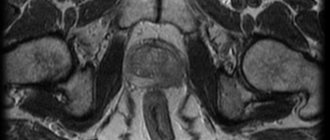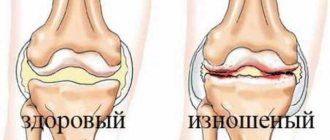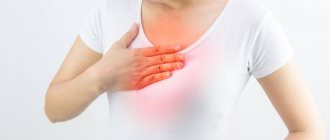Home>Articles>What is alcoholic polyneuropathy
quick menu (hide)
- What kind of disease is this?
- Symptoms
- Causes
- Types of polyneuropathy
- Diagnosis
- Treatment of the disease
- Non-drug methods
Constant consumption of strong drinks is the cause of a disease called alcoholic polyneuropathy. Timely detection of such a disease is the opportunity to cure it. If the disease develops into a chronic stage, then the alcoholic may develop serious problems with the respiratory system, heart function, metabolic processes, and limited mobility. Therefore, close people need to monitor the condition of a person addicted to strong drinks. Otherwise, it will be very difficult to save him.
general information
The disease, which is part of a group of neurological disorders, is called alcoholic polyneuropathy. It usually occurs at critical stages of addiction to strong drinks. The period of drinking alcohol is from 5 years or more. Signs of the disease were described in 1787 by the scientist Letts. Addiction to alcohol-containing products has an adverse effect on the entire body.
The disease affects the peripheral nervous system. A person experiences metabolic disorders , decreased sensitivity in the legs and arms. In accordance with international rules, when a disease is recorded in different countries, it is given a special label. For alcoholic polyneuropathy according to ICD 10, this is code G 62.1.
Literature:
- Peripheral nervous system in normal and pathological conditions: educational manual / N. S. Subbotina; Federal Agency for Education, State. higher educational institution prof. Education Petrozavodsk State univ. – Petrozavodsk: PetrSU Publishing House, 2006. – 129 p.
- Classical neurology: a guide to the peripheral nervous system and chronic pain syndromes / Silantiev Konstantin. – Volgograd: Panorama, 2006 (Volzhsky: Alliance Yugpoligrafkombinat, Volzhsky Polygraphkombinat). – 399 p.
- Private neurology: a textbook for students of medical universities / G. O. Andreeva et al.; edited by M. M. Same. – Moscow: Med. information agency (MIA), 2009. – 574 p.
Symptoms of alcoholic polyneuropathy
The harmful effects of alcohol-containing products extend to many nerve fibers. First, a person experiences a feeling of pain in the limbs and numbness. Few people pay attention to such signs . If you do not address such symptoms in a timely manner, it will be extremely difficult . Therefore, it is necessary to record signals, the main ones of which are:
- the occurrence of pain in the legs;
- formation of ulcers, dry skin;
- itching and burning in the feet;
- increased sweating;
- disorientation;
- speech problems.
With alcoholic polyneuropathy of the lower extremities, patients complain that their temperature sensitivity is impaired. In addition, they cannot sleep normally at night, since at this time the unpleasant sensations in the form of tingling, itching, and burning intensify significantly. As the disease progresses, such signs practically disappear, but this is not an indicator of improvement. Nerve fibers are destroyed in the body, and trophic disorders occur.
What are the symptoms of encephalopathy?
Symptoms depend on a number of reasons - the type of etiological factor, the duration and strength of its effect, the predominant area of damage to brain structures, as well as the stage of the disease.
At the first stage, general symptoms predominate, manifested in the form of headaches and dizziness, tinnitus, rapid fatigue, apathy, loss of strength, spoiled mood, including depression, sleep disturbances, weakened memory and decreased intellectual potential. First of all, you should be wary of the first three symptoms, which intensify with stress, weather changes, and fatigue from physical activity. If such symptoms appear, it is necessary to undergo a thorough medical examination by specialists at our center, who will be able to understand the reasons for your poor health, prescribe the correct diagnostic tests, and also organize timely and adequate treatment.
At the next stage, changes in taste, vision, and hearing occur, muscle tone decreases, nervous tics appear, and sometimes short-term convulsions occur.
At the very latest stage, fainting, speech disorders, lack of coordination of the motor sphere, and mental abnormalities occur.
But it is better not to bring the disease to such a stage when you simply cannot adequately think and assess your own condition. Do not miss the onset of the disease so that the damaging factor can be identified and eliminated and time is not lost for effective treatment and restoration of the functions of brain cells.
Sources of polyneuropathy
Disruption of the normal functioning of the nervous system can occur not only due to alcoholic polyneuropathy. Other diseases where the symptoms are very similar are epilepsy, drug overdose, diabetes, and oncology. Even poisoning with chemical compounds can cause problems with the nervous system. If this is, after all, acute alcoholic polyneuropathy, then the following circumstances contribute to its development and transition to the chronic stage :
- consumption of alcohol-containing products that affects the nervous system;
- problems with circulation in nerve fibers;
- metabolic disorder;
- critical vitamin B deficiency.
The risk of disease increases many times over if an alcoholic drinks surrogate drinks containing harmful impurities and liquids. A serious disease - alcoholic polyneuropathy can occur if a person has an abnormality of genes, the main function of which is to encode enzymes involved in the conversion of alcohol-containing products into acetaldehyde.
Reasons for the formation of pathology
Obvious signs of the disease make themselves felt in cases of advanced alcoholism. They are detected in patients with stages II and III of chronic alcohol dependence.
Causal factors leading to alcoholic polyneuropathy:
- Toxic demyelination of neuronal axons.
- Avitaminosis.
- Accumulation of acetaldehydes in the blood.
Low-quality alcohol, denatured alcohols, and non-edible liquids containing ethanol have a particularly destructive effect. Sometimes one dose of a toxic substance is enough to form polyneuritis. Hereditary deficiency of enzymes that neutralize the products of ethanol catabolism in the liver is also important.
- The process gets worse:
- Thiamine (vitamin B1) deficiency.
- Poor nutrition, due to lack of appetite during binge drinking, financial difficulties of an alcoholic who prefers to buy alcohol rather than normal food.
- Violation of the detoxification function of the liver.
Types of disease
The clinical symptoms of alcoholic neuropathy are nonspecific. Therefore, in order to determine at what stage the disease is, doctors assess the patient’s drug status, conduct electroneuromyography, and a number of additional studies. Depending on the results obtained, experts distinguish several types of disease:
- sensory. It is characterized by decreased sensitivity in the legs and arms , the appearance of seizures, changes in skin color, and numbness may be observed;
- motor. In this case, disorders are observed when changing the position of the foot, bending the fingers;
- arctic If a person experiences numbness , pain when palpating the lower extremities, or significant changes in gait , then doctors conclude that the form of alcoholic neuropathy is arctic;
The name of the next form speaks for itself. Specialists observe motor and sensory problems in a patient with a mixed type of disease. This is characterized by the appearance of pain during movement and rest, numbness, hypotension, and paralysis. In any form, effective treatment of alcoholic polyneuropathy is required.
Diagnosis of the disease
The earlier the disease is detected, the faster specialists will be able to determine the form of the disease and prescribe medications to alleviate the patient’s condition. Treatment of alcoholic polyneuropathy of the upper extremities or legs is not prescribed without conducting a study of bioelectric potentials. This procedure is called ENMG (electroneuromyography). Its disadvantage is the use of the technique only in the early stages of the disease.
When the disease has already progressed, electroneuromyography alone is not enough. Here, doctors must use nerve fiber biopsy, that is, cell sampling for a comprehensive diagnosis. Plus, specialists conduct an external examination and collect anamnesis. A combination of modern research methods makes it possible to accurately determine the form of the disease and the severity of damage.
Getting rid of alcoholic polyneuropathy
The disease - alcoholic polyneuropathy, which is a neurological disease, occurs gradually . Usually this disease occurs due to constant drinking and long-term drinking. To begin treatment, the patient must completely get rid of the addiction. Only in this way will the use of medicines and traditional medicine give the desired effect. In addition, you need to organize proper nutrition and your own rest regime. If the conditions are met, then specialists begin treatment. Based on research, doctors prescribe medications to the patient that relieve pain, and also resort to anti-inflammatory drugs. Another irreplaceable remedy is B vitamins .
Healing legs when alcoholic polyneuropathy is detected
Now we will talk about how to cure alcoholic polyneuropathy of the lower extremities using medications. To achieve the desired effect, it is necessary to diagnose the disease in a timely manner . It is better if loved ones of a person who is experiencing symptoms of the disease force him to seek qualified help at an early stage. In this case, it is possible to achieve complete restoration of the affected nerve fibers and improve the circulatory system.
Doctors, taking into account the individual characteristics of the sick person’s body, will prescribe comprehensive treatment . For example, for people suffering from allergic reactions, the course will be different. If a diagnosis is made and it is determined that the patient suffers from alcoholic polyneuropathy, then treatment will be as follows:
- prescription of vasoactive drugs ;
- use of painkillers (non-steroidal);
- an order to take a course of antidepressants ;
- It is mandatory to take B vitamins ;
- prescribing creams and ointments to relieve pain in the legs;
note
Treatment will only help if the patient completely stops drinking alcohol-containing products. It will bring the expected effect if he eats properly, balanced and nutritiously. It is worth noting that when the symptoms of the disease appear within a year, then this is an acute form of the disease. With a longer course it develops into chronic.
Risk group
According to statistics, pathology occurs in 70-75% of cases in people suffering from alcohol dependence for 4-5 years. Researchers believe that the disease develops regardless of race, nationality or age range. Although statistics indicate that polyneuropathy occurs more often in women. The risk of developing the disease is lower in men - this is due to the fact that they absorb ethanol more slowly. The level of alcohol in the blood depends on the rate of absorption; in women it is usually higher.
Among the factors that increase the risk of disease are not only alcoholism. Researchers describe that impaired circulation in nerve fibers accelerates the development of symptoms. The risks also increase in patients with critically low vitamin B levels and in people with metabolic disorders.
The disease often develops in alcohol addicts who have consumed substitute alcoholic beverages (cologne, alcohol-based medications, etc.). This is due to the presence of harmful impurities in the composition. Genomic abnormalities are also provoking factors. They encode enzymes that are involved in the metabolism of acetaldehyde in alcohol-containing products.
Detoxification
3 000 ₽
Calling a narcologist to your home
3 000 ₽
Polyneuropathy of the extremities
At the initial stages of the development of polyneuropathy, pain in the arms and legs and a feeling of “numbness” are observed. Few victims will pay attention to minor symptoms, so the disease is often diagnosed already at the 2-3 stage of development. The first manifestations of polyneuropathy:
- pain syndrome of extremities;
- there are single ulcers;
- the skin is “overdried” and flaky;
- sweating increases;
- possible disorientation, confusion, speech disorders.
There are several forms of alcoholic polyneuropathy: acute, subacute, chronic - a classification based on the course of the disease. Chronic polyneuropathy is more common - a gradual progression of negative symptoms that lasts several years. Acute or subacute form of the disease is a rare case; the cause is mainly a lack of vitamin B1 in the body.
Thiamine deficiency causes symptoms to develop over several days to weeks. There is a latent form of polyneuropathy - it is characteristic of patients with long-term alcoholism; in this case, symptoms may be absent for several years of the onset of the disease.
The pathogenetic mechanism for the development of polyneuropathies has not been fully established. Researchers describe 2 theories of the mechanism of disease formation. The first is based on the direct toxic effects of alcohol and its breakdown products on the fibers of the nervous system. The second theory concerns thiamine deficiency - it is associated with poor diet or problems with absorption of the vitamin.
Lower limbs
Patients with leg polyneuropathy note the first symptom - impaired temperature sensitivity, the presence of severe muscle weakness. Problems arise with sleep, as discomfort tingling, itching, and burning are felt in the legs at night. As the disease progresses, the primary symptoms disappear and new ones appear. Inside the body, nerve fibers are destroyed and trophic disorders are observed.
There are several types of lower extremity polyneuropathy:
- sensory - sensitivity disappears, convulsions are present, skin tone changes, limbs go numb;
- motor - characterized by disturbances when changing the position of the foot, problems with bending the fingers;
- Arctic - pain is felt when feeling the legs, the style of gait changes;
- mixed - motor and sensory problems.
Pain is often present during active exercise. But the pain is also felt in a relaxed state. The formation of hypotension and paralysis is possible.
Upper limbs
Mixed polyneuropathy is more common; symptoms include problems with the upper and lower extremities. There may also be a feeling of weakness in the muscles of the skull - there are disturbances in the masticatory vocal and oropharyngeal muscles. Other symptoms of polyneuropathy:
- Digestion is disturbed, constipation occurs;
- problems with urination, erection;
- no reflexes;
- idiopathic pain in various parts of the body;
- swelling of the limbs;
- pale skin - its shade does not change depending on the ambient temperature;
- shortness of breath, dizziness;
- wounds on the patient’s body heal slowly;
- imbalance - patients are often unable to walk along a level line while blindfolded.
Less common, but weakness of the respiratory muscles is noted - patients experience attacks of tachycardia and breathing problems. Central symptoms of hand polyneuropathy:
- attacks of paresthesia - suddenly there is a strong burning sensation, tingling, a feeling of “crawling goosebumps” on the skin;
- muscle weakness;
- convulsions;
- increasing pain, dry skin;
- impaired mobility, flexion of fingers.
Over time, polyneuropathy develops new symptoms - the reaction to painful stimuli is lost, temperature sensitivity disappears. When the lower extremities are affected separately, the clinical picture is similar to the motor form of the disease. But if only the arms are affected, it is mainly the extensor muscles that are affected.
Diabetic form
The diabetic form develops as a complication of diabetes mellitus. This type of polyneuropathy is a sensorimotor disorder. Patients complain of idiopathic pain in various parts of the body. The sensitivity of the limbs is noticeably reduced - the sick person has difficulty raising his arms or moving around.
Diabetic polyneuropathies are described in two types: focal and diffuse (edematous). In 50% of patients, DPN occurs without obvious symptoms. Thin fibers in the peripheral nervous system are also affected. Symptoms include: irregular heart rhythm, attacks of tachycardia even at rest, diabetic gastroparesis and diarrhea.
DPN develops more often with arterial hypertension and in people who smoke. Although, according to statistics, the disease occurs in 70-73% of people with diabetes. Nerves extending to the limbs and head are affected.
In addition to tachycardia, symptoms are similar to other types of polyneuropathy:
- pain worsens at night;
- the skin's sensitivity to external irritants is lost;
- arms and legs go numb;
- you feel chilly, your feet swell;
- sweating of the extremities increases;
- calluses, long-healing wounds and ulcers form.
When large nerve fibers are affected, a person experiences difficulty maintaining balance and problems with finger mobility. Pain sensitivity disappears completely - patients do not feel pain from wounds, burns or cuts. Additionally, infections occur if the ulcer becomes infected.
Diagnostics
If polyneuropathy is suspected, an urgent, thorough diagnosis is required. After all, the symptoms of the disease are often similar to epilepsy, drug overdose, diabetes, and oncology. Based on the identified factors, a topical diagnosis is established - that is, a specific area of damage to nerve fibers is identified.
The diagnosis of polyneuropathy is not established solely on the basis of patient complaints. To identify pathology, instrumental and laboratory tests are prescribed.
The first step is a consultation with a neurologist. He examines the affected arms or legs and checks reflexes. This is followed by blood sampling for a general analysis. You will also need electroneuromyography, and less commonly, a biopsy.
ENMG shows the localization of peripheral nerve damage. The technique helps to differentiate the disease and determine prognosis in accordance with the stage of the pathology.
The next stage of diagnosis is laboratory techniques and screening tests. Sometimes a consultation is scheduled with doctors of other specializations - often an endocrinologist or immunologist is involved. Depending on the type of disease and its stage, the doctor may refer the patient to the following medical procedures:
- electroneuromyography to assess the functionality of motor and sensory nerves, identifying the nature of the disease;
- blood sampling;
- biochemical blood tests;
- if diabetes is suspected, hemoglobin tests;
- blood test for HIV, hepatitis;
- blood test for the content of vitamins B1, B6, B9, B12 in the body.
Additionally, cardiovascular testing is performed to assess heart rhythms and sensory sensitivity tests. ENMG evaluates the bioelectric potential of the limbs, but the technique is relevant only in the early stages of the pathology.
All types of drug addiction
Drug addiction treatment
More details
Female, age, beer
Treatment of alcoholism
More details
Clinical guidelines
Treatment of polyneuropathy begins with complete abstinence from alcohol consumption. The patient must adjust his diet, sleep patterns, work and rest patterns. Only after normalizing your lifestyle will doctors be able to prescribe a treatment plan. At the first stage, painkillers and anti-inflammatory drugs and B vitamins are often prescribed.
Detection of pathology at an early stage is a factor that plays an important role in recovery. Complete restoration of nerve fibers, normalization of blood circulation - all this is possible with timely detection of polyneuropathy. The patient's efforts are necessary. He faces important tasks:
- normalize body weight - it should not be in excess or deficiency;
- give up tobacco, alcohol, surfactants;
- maintain a balanced diet with normal amounts of vitamins, proteins, macroelements;
- follow the doctor's recommendations.
Treatment
The treatment of polyneuropathy cannot be done without the use of drugs. The doctor prescribes a comprehensive therapy plan based on a thorough diagnosis. The plan includes the following:
- a course of vasoactive drugs is prescribed to improve blood circulation;
- non-steroidal painkillers are prescribed;
- a course of antidepressants to normalize the mental sphere;
- a course of B vitamins is required;
- External treatment is carried out with creams and ointments of various types.
No treatment will be effective without a complete cessation of alcohol, normalization of diet and lifestyle. If the symptoms do not go away within a year, this indicates that the pathology becomes acute and then chronic.
Treatment involves three principles. The first is to eliminate or reduce external tissue damage. The second is to restore the functionality of damaged peripheral nerves. The third is symptomatic therapy, depending on the accompanying symptoms. At the third stage, vegetative and neuropathic symptoms are relieved. Often specialists from related fields are involved.
Therapy in the clinic
The most reliable and effective therapy is carried out in a hospital setting. After all, the disease is formed on complex dystrophic, metabolic, toxic, mechanical and ischemic factors. The correct treatment plan is aimed at identifying and relieving not only the symptoms, but also the causes of the disease.
It is advisable that the patient receive 24-hour monitoring during treatment. The clinic has the opportunity to track vital signs of the body. The patient needs a proper diet - in a hospital setting it is developed by doctors. It is advisable for sick people with neuropathy to lie on high pillows, avoid active mobility, and wear special underwear.
Taking any medications is safe under medical supervision. In a clinical setting, it is easier to give up alcohol. Patients undergo daily health procedures, and a plan of moderate physical activity is personally developed for each one.
Recovery and rehabilitation
After successful treatment of polyneuropathy, the next stage begins - recovery and rehabilitation. The doctor is developing a course of rehabilitation treatment. After all, after polyneuropathy, it is important to normalize the functioning of the muscular system. During therapy, if there is a lack of mobility, the muscle tissue weakens. With the efforts of several specialists and hard work, muscle mobility can be restored.
The first thing prescribed after polyneuropathy is courses of therapeutic massage. It is necessary to improve blood supply. Massage will restore tissue elasticity and improve metabolic processes.
Physiotherapeutic techniques and electrical neurostimulation normalize tissue microcirculation, reduce pain, and restore muscle cells.
After prolonged treatment of advanced stage polyneuropathy, work with occupational therapists will be required. The purpose of occupational therapy is to help the patient adapt to a new condition. The specialist develops movement algorithms for performing household chores.
Rehabilitation measures, their list and duration depend on the duration and stage of the disease. The treatment regimen is compiled individually for each patient. The rehabilitation plan often includes psychological consultations, taking vitamins, and following a diet.
Home treatment
Polyneuropathy is a serious disease that affects the motor and sensory function of the nerves. It cannot be cured on your own at home.
Traditional methods and remedies can only slightly reduce pain and swelling at the first stage of the disease. Their use is allowed, but only in combination with traditional treatment and after consultation with the attending neurologist.
Effective treatment means seeing a doctor in a good clinic. Folk remedies can only complement medical methods. They slightly improve metabolism.
Consequences of the diagnosis
Polyneuropathy is a life-threatening diagnosis. The addition of a secondary infection to non-healing wounds often leads to the formation of gangrene. The pathology will not go away “on its own.” The consequences are serious and painful if the disease is left to chance.
After several months of illness, the muscles become weak and muscle tone decreases. The result is muscle tissue atrophy, paralysis of the arms and legs. Other dangerous consequences include respiratory depression, leading to death.
The progression of polyneuropathy causes more and more inconvenience every month. And if discomfort is felt at first, then weeks later patients suffer from severe pain. The usual way of life is changing. After a few months, the person becomes disabled - he is no longer able to move independently or perform everyday tasks.
Only high-quality treatment at the initial stages of pathology development can restore a normal quality of life. In cases where full restoration of the body is no longer possible, doctors are engaged in the task of alleviating the patient’s condition.
It is easier to prevent any disease before it occurs than to then undergo long and complex therapy. To prevent polyneuropathy, it is recommended to abstain from alcohol, undergo a timely medical examination, treat infectious diseases and eat right. A healthy lifestyle, moderate physical activity, and a sufficient amount of vitamins entering the body are factors that become prevention for many diseases.
Use of non-drug methods for treatment
Without special medications, it will not be possible to defeat alcoholic polyneuropathy. The help of doctors who can determine the condition of a sick person and help him is a necessary condition for recovery. In addition to medication, they also use other methods. Physiotherapeutic procedures, for example, electrical stimulation of the spinal cord and nerve endings, have proven their effect. Doctors also advise contacting massage therapists. Such specialists will help tidy up muscle activity.
Treatment of acute and chronic alcoholic polyneuropathy is a complex of different measures that help the patient feel much better. By completely abstaining from alcohol and strictly following the doctor’s recommendations, you can be completely cured . Moreover, the use of methods offered by traditional medicine has also not been canceled. For example, a drink made from sunflower seeds, parsley and kefir is very healthy.
Under no circumstances should such a disease be allowed to take its course. After all, this disease can lead to a wheelchair, and in some cases cause the death of a person. Only a timely visit to the doctor, the use of prescribed treatment, and a therapeutic course will help here. In this case, you will definitely be able to defeat this terrible disease!
Prevention
The main measure to prevent the occurrence of polyneuritis of alcoholic origin is to avoid drinking ethyl alcohol-based drinks. To maintain muscle condition and improve immune status, you should lead the right lifestyle:
- active sports;
- walks in the open air;
- quitting smoking.
To achieve success in the fight against addiction, you should not neglect visits to a psychologist and observation by a psychiatrist, since therapy for chronic alcoholism includes both correction of mental status and long-term complex drug therapy.









